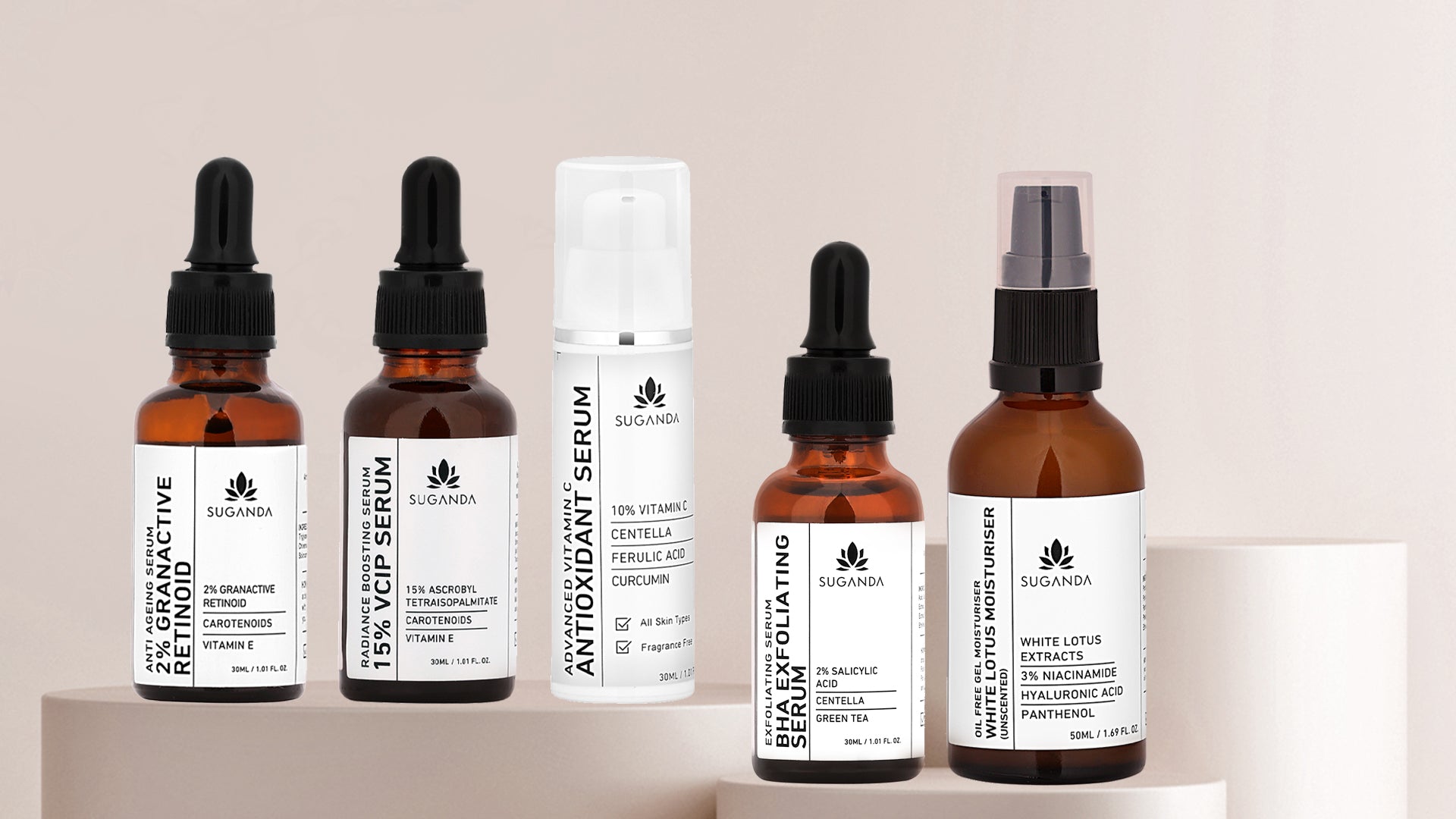Written by - Ujjvala
Even a mild pimple that pops on the face makes us depressed. What if acne keeps breaking out frequently? They leave behind pits and dark spots and result in a rough surface. The result is uneven skin pigmentation and texture.
What causes uneven skin texture?
- Uneven skin texture is frequently caused by an accumulation of dead skin cells on the skin's surface. This can make skin feel rough to touch and appear dull.
- Another reason is smoking, which can result in uneven skin tone. Kicking the habit can help you get rid of wrinkles.
- Spending more time outside can also cause irregularities, so wear sunscreen. Wear sunscreen at all times and reapply as needed. This will protect your skin from environmental damage.
- Bumpy skin is also a sign of uneven texture. The skin cell turnover slows as we age, leading to a dull appearance and scaly patches.
The painful acne associated with oily adolescent years often results in large pores.
They can also be caused by ageing, decreased skin tone around the pores, genetics, and excessive sebum ( skin's natural oil) production.
Taking all the issues into account, we have 5 easy steps for you to reduce the appearance of unevenness.
1) Gentle Exfoliation
Exfoliation refers to any process that strips away dead skin cells from the skin's outermost layer. The accumulation of dead and keratinised skin cells can impact the texture and appearance of your skin, which is why exfoliating regularly is essential for smooth skin.
Exfoliation can be classified into two types: physical and chemical. Physical exfoliation, also known as mechanical exfoliation, involves using an abrasive substance to scrub away dead skin cells with motion. Chemical exfoliation uses chemical agents to separate dead skin cells to strip them off.
Although both exfoliation methods can increase skin texture, most skin care professionals recommend chemical exfoliants. This is because physical exfoliants, such as microbeads and crushed walnut shells, are too rough for the skin and can cause microscopic cracks and discomfort.
As a result, it's advisable to look for products containing chemical exfoliants like alpha hydroxy acids (AHAs)
Glycolic acid, lactic acid, mandelic acid, tartaric acid, malic acid, and citric acid are all AHAs. These ingredients work on the corneocytes ( dead skin cells on the outermost layers of the skin). The cell turnover rate is increased by improving their breakdown and ramping up the separation of skin cells. Finally, this aids in the improvement of uneven skin texture, resulting in softer skin.
2) Use an Oil-Based Moisturiser For Dry Skin
If you have rough skin on your face, you should try an oil-based moisturiser to improve the texture of your skin. Dry, rough skin happens when your skin produces less sebum (oil) than usual, and it can also happen if your skin's lipid barrier is eroded.
The lipid barrier comprises approximately 50% ceramides, 25% cholesterol, and 10% to 15% fatty acids.
Skin barrier is weakened when these essential lipids are absent, and the skin becomes dry and rough. Ingredients in an oil-based moisturiser will replenish the skin's barrier function and improve skin texture. Oil-based moisturisers are also ideal for cold environments.
3) Vitamin C
Vitamin C is a powerful antioxidant known to even out skin tone, enhance uneven skin texture, fade dark spots, and lighten the complexion. This is achieved by preventing melanin synthesis. Melanin is a pigment that gives our skin colour, but too much of it can cause unwanted dark spots known as hyperpigmentation. Vitamin C reduces melanin formation by inhibiting tyrosinase, an enzyme needed for melanin synthesis. As a result, the skin appears brighter, with fewer dark spots and a more even skin tone.
4) Try Probiotics
The microbiome is a community of bacteria (over 10,000 different species), both good and bad. Skin conditions such as acne and bumpy, uneven skin texture can develop when there are more bad bacteria than good bacteria. As a result, having a balanced microbiome is essential for having perfect skin. This is where probiotics come into play. Probiotics are different strains of beneficial bacteria that work with your skin. Scientists have discovered a few bacteria strains that can enhance the skin texture by boosting the skin barrier. Overall, probiotic skincare products are yet another option for improving skin texture.
5) Wear A Sunscreen
The tips for improving skin texture discussed above can help you get rid of textured skin. However, it is preferable to avoid the formation of uneven skin texture in the initial stage. Wearing a broad spectrum SPF 30 sunscreen on all sun-exposed skin on a routine basis is one way to accomplish this. While sunscreen helps prevent fine lines and wrinkles, it also reduces skin redness and unevenness.
If you are willing to spend some extra time and a penny on your texture, you could try using chemical peels only with a dermatologist's suggestion. Although it doesn't have any significant drawbacks, it makes the skin more sensitive to the sun. Hence make sure you follow step 5 without fail!
References:
1.“CLEANSERS AND THEIR ROLE IN VARIOUS DERMATOLOGICAL DISORDERS”,2011 Jan-Feb,https://www.ncbi.nlm.nih.gov/pmc/articles/PMC3088928/
2.“Skin anti-aging strategies”, 2012 Jul1,
https://www.ncbi.nlm.nih.gov/pmc/articles/PMC3583892/
3.Dr. M.S. Latha,”Sunscreening Agents”,2013 Jan,
https://www.ncbi.nlm.nih.gov/pmc/articles/PMC3543289/






 +91 9347578980
+91 9347578980